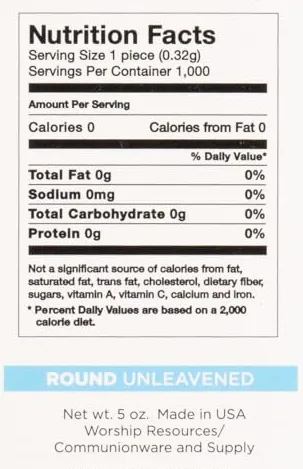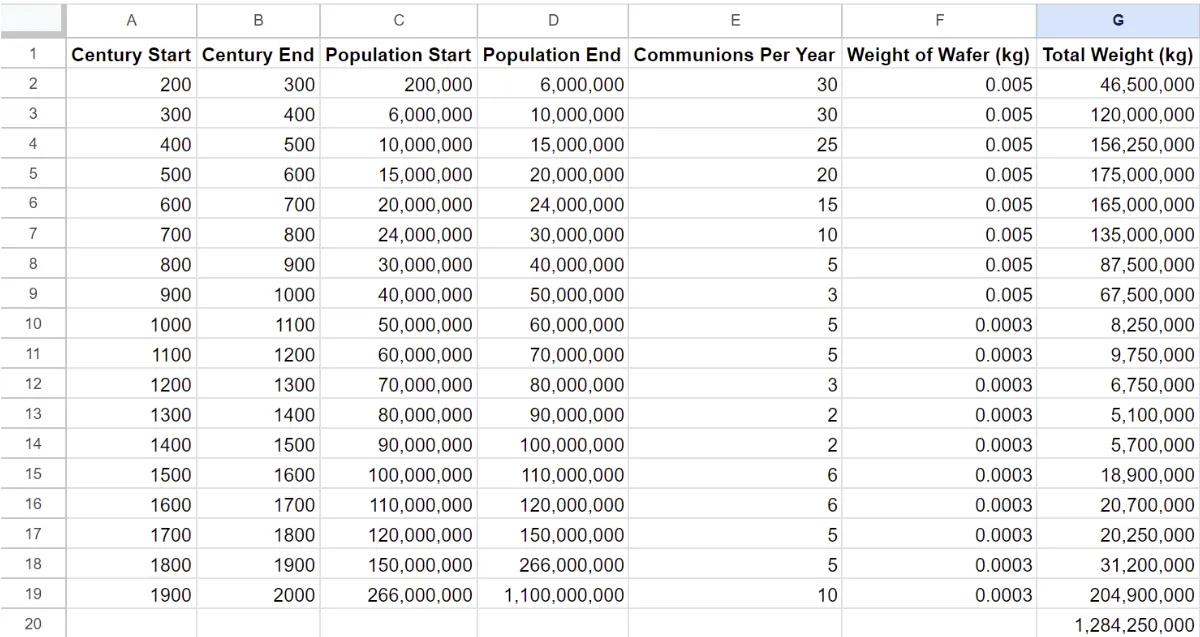900 ft. Jesus?
Mark Honeychurch - 22nd July 2024
In 1215 the Catholic Church’s Fourth Council of the Lateran, which had been announced two years prior and so was very well attended, introduced many new rules. Many of these were focused on fighting corruption within the clergy, by limiting when and how clergy could charge fees for their work (e.g. no fees for reversing someone’s excommunication, consecrating a bishop, or offering “superfluous services”), and banning certain practices like getting drunk and nepotism (specifically, priests handing their job down to their sons).
Here are some of the lowlights of some of the worst decrees:
- Canon 16: De indumentis clericorum - No pointed or embroidered shoes for clergy, and no gambling or theatre productions
- Canon 22: Quod infirmi prius provideant animae quam corpori - A priest should be called to attend to spiritual matters for the sick before administering any medicine
- Canon 54: Ut decimae ante tributa solvantur - tithes should be paid before taxes
- Canon 68: Ut Iudaei discernantur a christianis in habitu - Jews and Muslims should wear badges so that Catholics can avoid social contact with them
- Canon 69: Ne Iudaei publicis officiis praeficiantur - Jews could not hold public office
However, De fide catholica (on the catholic faith), the first Canon, is the one that skeptics most often have an issue with. It is this Canon that formalises the idea of transubstantiation, where the communion bread and wine are converted “in substance” through the eucharistic prayer into the flesh and blood of Jesus. From the “Compendium of the Catechism of the Catholic Church”:
“Transubstantiation means the change of the whole substance of bread into the substance of the Body of Christ and of the whole substance of wine into the substance of his Blood. This change is brought about in the eucharistic prayer through the efficacy of the word of Christ and by the action of the Holy Spirit. However, the outward characteristics of bread and wine, that is the “eucharistic species”, remain unaltered.”
In other words, the bread and wine change into flesh and blood, but they continue to look like bread and wine. Now, obviously it’s easy to be skeptical about this event - what does the Catholic church mean by “in substance”? Obviously this change eludes any kind of scientific testing, so substance doesn’t actually mean anything meaningfully physical - otherwise we’d be able to see the wafer change in front of our eyes, and even sequence Jesus’ DNA! But, what if we take this claim (semi) seriously?
When I pondered this question a few weeks ago, I started to wonder how much of Jesus’ flesh has been created by the Catholic church since the first Catholic Communion. Then I imagined all of this flesh coming from a single physical Jesus, living somewhere in the aetherial realm, and I started to think about how large this Jesus would need to be to maintain this supply. So, I invite you to join me as I do some quick back of the envelope calculations to try to guesstimate the size that a Jesus would need to be in order to supply the catholic church with its pound of flesh.
Communion Wafers
The Catholic Church uses communion wafers that are supplied from a few companies such as the Cavanagh Company, some of which boast that they are able to avoid requiring any kind of specially ordained workers by fully automating their production line.
I couldn’t find any info on the weight of a Cavanagh wafer, but easily found a shop in NZ that sells similar wafers for non-Catholic services, and has some handy info on the back of the box.

If we look closely at the Nutrition Facts in the top right of the packaging, we can see not only how much the pack of 1,000 wafers weighs (5 oz), but also the much easier to use metric weight of 0.32g per Serving Size of 1 piece.

Of course, communion wouldn’t always have been this small. I delved into the history of communion bread, naively assuming that it would only be recently with modern manufacturing that we’ll have been able to make these small wafers Catholics consume today. But I quickly found out I was wrong, and that small wafers have been used since about the 11th century. From a Quora response to the question “How and why did the Roman Catholic communion wafer evolve into its current form?”:
For the first few centuries, people just used their daily bread. It was leavened, and usually came in small round loaves that were easy to break without much mess…
By the late 7th century, it became the practice, at least in some places, that bread would be specifically prepared for the liturgy that was not to be used for other purposes. At least in the royal court, it resembled a crown with the central hole of the crown filled in with a cross.
With the ninth century comes the Holy Roman Empire and more German influence on the Roman liturgy, and Roman liturgical use in the German lands, and a significant change. It became more common to use unleavened bread - in imitation of Passover matzah perhaps - and the emphasis grew on it’s uniqueness and other-worldiness. Making it less like normal bread and more like something ritualistic…
Of course, in the Byzantine Empire, the practice of leavened bread continued and developed its own particularities, so a large leavened loaf would be used…
Back in the West, a couple centuries later it became common to shrink the size of these hosts, from bread that could be broken and given, to individual “bite size” pieces… By the eleventh century it looks more or less like the host we are now familiar with.
So, we have an interesting change here. I’m going to keep things simple, and treat this as a simple change from 5 grams of bread per person before 1000 AD to 0.3 grams from then on.
Eucharistic Prayer
The Eucharistic Prayer is what apparently does the job of turning bread and wine into Jesus, so we don’t need to consider any communions that happened before the Catholic church started using this prayer. Simply Catholic says that this prayer is generally accepted as having been adopted by the church in 215 AD, so we only have to consider the Catholic population for the last 1,800 years or so.
Catholic Population
According to Pew Research, over the last 100 years the Catholic population has risen from around 300 million to just over a billion. But this isn’t enough, as we need to know all the way back to around 200 AD. At this point, given that I couldn’t even find any unreliable data, let alone something that sounded official, I decided to roll the dice and ask ChatGPT if it could do this part for me:
Can you give me an estimate of the Catholic population of the world every 100 years from the year 200 AD until 2000 AD?
I’ll spare you the descriptions it gave me for each 100 year step, but here are the values it estimated - and they become oddly linear for a while, which is suspicious given that in the middle of the list were reasons such as “Continued influence and expansion of Catholicism, though challenged by events like the Black Death.” (I honestly would have thought that the Black Death would have put a visible dent in these numbers - occurring from 1346 to 1353, and killing up to 50% of Europeans).
- 200 AD: 200,000
- 300 AD: 6 million
- 400 AD: 10 million
- 500 AD: 15 million
- 600 AD: 20 million
- 700 AD: 24 million
- 800 AD: 30 million
- 900 AD: 40 million
- 1000 AD: 50 million
- 1100 AD: 60 million
- 1200 AD: 70 million
- 1300 AD: 80 million
- 1400 AD: 90 million
- 1500 AD: 100 million
- 1600 AD: 110 million
- 1700 AD: 120 million
- 1800 AD: 150 million
- 1900 AD: 266 million
- 2000 AD: 1.1 billion
Observance of communion
We could consider non-catholic communion, as Protestants and other denominations also use communion as a ritual, but given that they generally don’t believe in transubstantiation, and don’t use the Eucharistic Prayer, we’re going to stick to Catholics only.
So how often do Catholics take communion? The church insists that all Catholics should observe (take part in) communion once per year:
After being initiated into the Most Holy Eucharist, each of the faithful is obliged to receive holy communion at least once a year.
However, many take communion weekly. A Pew Research article from a few years ago suggests that around 40% of white Americans, and 20% of hispanic Americans, take communion every time they go to Catholic mass. Of course, this begs the question of how often these people go to mass - it’s mostly less than every week, but it’s mostly more than once a year.
Historically, it seems that, although there was a lot of passion for communion early on in the church, the 1215 AD Fourth Lateran Council’s insistence on Catholics taking communion at least once a year was likely to have been a response to falling rates of observance, with the drop going back maybe as far as 400 AD or so. There was some weirdness in the late middle ages of worshipping the communion wafer rather than swallowing it (look up monstrance if you want to know more). The Council of Trent (1545-1563) again pushed for frequent taking of communion, but fell short of demanding it be done weekly. Finally there was a push in the early 20th Century for Catholics to take communion as often as they can.
Using this info, I’ve fudged together some numbers for the average communions per Catholic in each century - I figure if AI’s allowed to guesstimate, then I can do it too!
Total Wafer Weight
Putting all of this together, and using a spreadsheet to calculate our total mass per 100 years based on the population at the midpoint of each 100 years (assuming linear growth - I know there are multiple reasons this isn’t perfect, but this is all guesstimating so it’ll have to be good enough), we arrive at these figures:

These totals were calculated using the formula: =(B2 - A2) * ((C2 + D2) / 2) * E2 * F2
So, we’re looking at about 1.3 billion kilograms of unleavened bread consumed by Catholics. As a sanity check, I looked up worldwide consumption of bread, and apparently it’s 200 billion kilos a year, so the idea that just 2% of our current yearly consumption has been consumed as communion bread in the last 1,800 years sounds sensible, and maybe even a little conservative.
Okay, so we have a number - now, how do we go about working out how large our Jesus needs to be to supply this amount of flesh?
How much Edible Flesh is there on a human?
It turns out that there is estimated to be around 75lb (34kg) of edible flesh on an average human - the things you learn! The paywalled National Geographic article that this claim was made in seems to use a human average of 146 lbs, or 66 kg. So, using this number, roughly half of an average-sized human is edible flesh.
Liposuction
But what if we want Jesus to still be alive? Presumably then we can’t just strip him of all his flesh. In this case, we could consider the amount of fat that can be safely extracted from a human during liposuction. According to the American Society of Plastic Surgeons this depends on a patient’s weight, but they have an upper safe limit in place of 5 litres, which at 0.9kg per litre comes out at around 4.5kg.
BMI
Can we use BMI to calculate a human’s height for a given weight?
BMI is a large topic of conversation in and of itself, but we could consider using it as a way to figure out the height of Jesus for a given mass, if we pick a desired BMI. BMI uses a square relationship between height and mass, so a given BMI is the ratio of weight in kilograms divided by the square of the height in metres. Reversing this, if we divide a person’s weight by their BMI, and take the square root, we will get their height.
So, for example, a 75kg Jesus with a BMI of 25 will be the square root of 75 / 25 m. 75 / 25 = 3, and the square root of 3 is about 1.73. So, a 75kg Jesus with a healthy-ish BMI will be just over 1.7 metres tall.
Sadly, this calculation won’t really work when we’re dealing with a giant, which our Jesus needs to be. BMI makes some allowance for a larger, thicker body for taller people, but as it only uses the square of height, as we get taller a hypothetical person with a certain BMI will get skinnier and skinnier.
GMI
It seems that a better calculation is to treat a large human as simply a scaled-up version of a normal sized human, and use the cube of the height. This is because, as the dimensions of a physical object increase, its surface area increases as the square of one of the dimensions, and the volume as its cube.
So, for the purposes of this exercise, I’m going to assume that our scaling is a simple linear change in all three dimensions according to the same ratio, and as our Jesus grows taller, he grows wider and deeper at the same rate. We can invent a new metric for our calculations, like the BMI, but using the cube of the height. I’m going to call it the GMI (Giant Mass Index), as giants are usually depicted as being scaled up versions of humans - even though we can be pretty sure that, given how physics works, a scaled up human would quickly collapse under their own weight (and have a whole host of other medical issues that would probably result in their death within seconds of being created).
The GMI of a giant is their weight divided by their height cubed. We can calculate the GMI for a human-sized Jesus by figuring out Jesus’ likely weight and height, and the internet has a whole heap of ideas as to what these could be. Google AI Search Labs, which is like Bing’s CoPilot and suggests answers from their AI LLM, tells me 5’5” and under 200lbs. The first search result under that suggestion, on Quora, says 5’10” and 175lbs. Next is Bible Reasons with 5’ and 100lbs. None of these are in metres or kilograms, which I both find very annoying for my calculations and which make me figure it’s mainly Americans in the English-speaking world who are pondering these kinds of questions and taking the Bible seriously.
The first result when I ask Google for metric values is another Quora post, this time giving 1.75m and 73kg. Those sound eerily specific, like someone might have travelled back in time and had Jesus step on one of those doctor’s measuring devices, so I’m going to use these and assume they’re historically accurate. Therefore our GMI for Jesus is 73 / 1.753, or about 13.62. So, once we have the desired weight for our Jesus, we can simply divide our weight by our GMI of 13.62 and then cube root it.
VLJ
As it seems that I’m on a roll here with making up new TLAs (Three Letter Acronyms - an ironic acronym that I was introduced to many years ago, when I was in the British Army), we now need to calculate the height of our Very Large Jesus (VLJ). For this we have our total weight of consecrated eucharist bread that Catholics have consumed over the last 1,800 years, but we also need to decide what percentage of Jesus’ body we’re comfortable using for this calculation. I’m going to go with stripping Jesus to the bone and taking all of his edible flesh here, leaving just a skeleton. So our Jesus will be double the weight of our consumed communion wafers, or around 2.5 billion kilograms.
Crunching the numbers, I’ve ended up with a Jesus who would need to be 573m tall in order to satisfy the Catholics’ lust for human flesh. Here he is lovingly rendered by Stable Diffusion:

Blood
One thing I haven’t done here is consider blood. An adult human has around 5 litres of blood, which at a density of around 1 kg / litre (with about half of that being water) weighs around 5kg. However, if we once again want our Jesus to be alive, we could only really take the safe donation limit of just under 0.5kg of blood. I’d guess that a sip of communion wine would be around 10ml or so these days, but maybe historically people drank more. Who knows.
I’m going to have to leave this as an exercise for the reader. Your homework is to figure out whether my 500m tall Jesus would have enough blood to supply the Catholic church, or if Jesus would need to be even taller to provide the blood required.
Fish
As I wrote this article, I talked about my findings with my eldest daughter, and she brought up the parable of the loaves and fishes, where Jesus made 2 fish and 5 loaves feed five thousand people (yes, I know the numbers change depending on which gospel you read). Maybe in my next article I’ll work out how big those fish and loaves would need to be to satiate the crowd. Maybe a couple of large tuna fish would be enough?